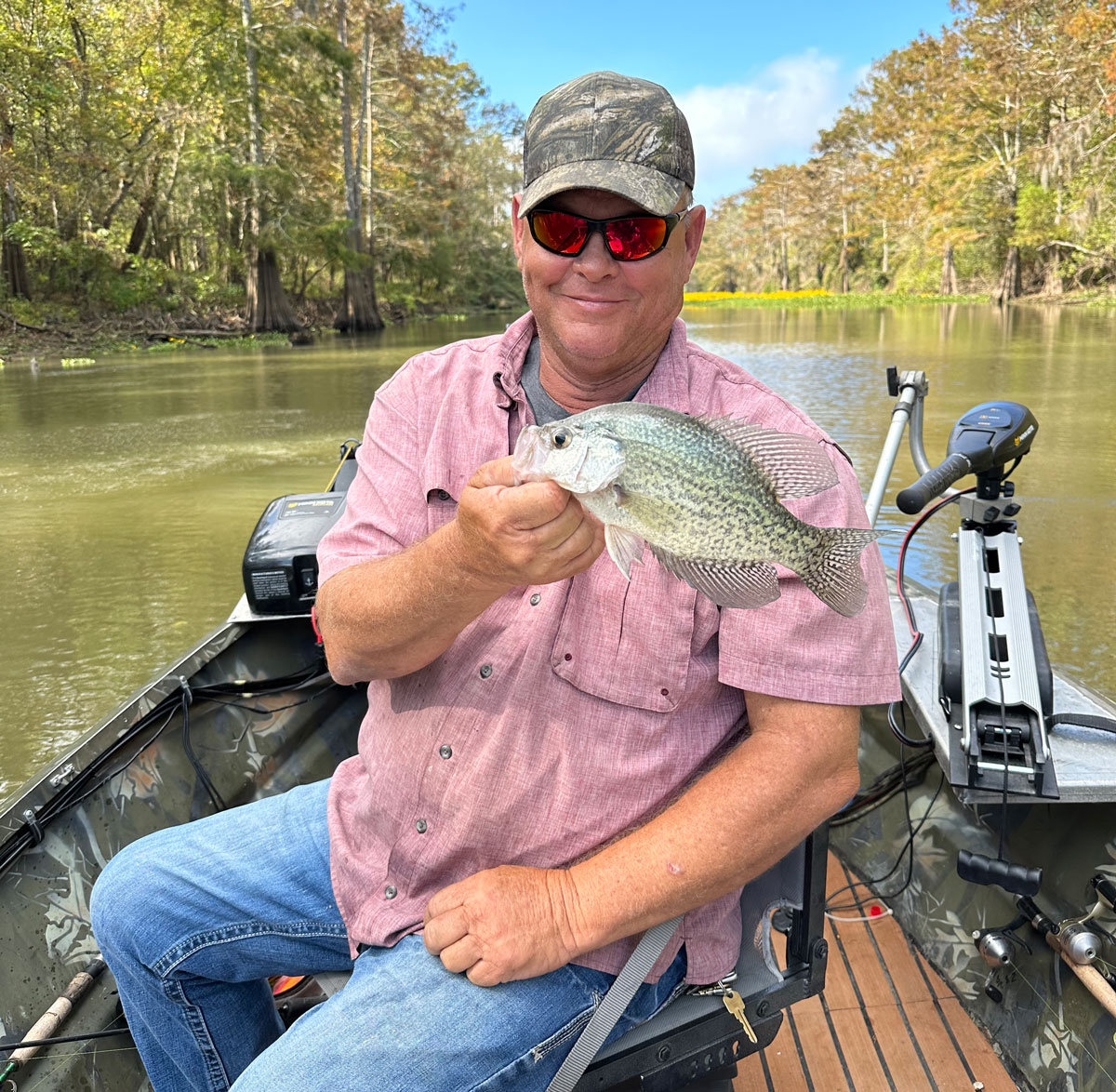
Louisiana Department of Wildlife and Fisheries Commission members do not need to make hasty decisions on conserving crappie, according to Robby Maxwell, an inland fisheries biologist.
Maxwell reported to the commissioners at their regular monthly meeting held on Thursday, Dec. 7, on Louisiana’s official fish, the crappie.
“We don’t want to make any knee-jerk regulations or any unnecessary regulations. Most anglers don’t catch 25 or more crappie,” he said. “Limits would have to be drastically lowered to impact harvest rates. Lower harvest rates equal smaller fish and could impede growth rates.”
Louisiana’s crappie harvest is vibrant, according to the report. General and annual mortality ranges from 41 percent at Caddo Lake to a high of 93 percent at Poverty Point Lake, but even with the high mortality rate anglers continue to be successful, he said.
“Even with that high mortality we are still hammering crappie at Poverty Point,” Maxwell told commissioners. “There will be different mortality rates at other water bodies.”
Catching young crappie
Anglers are also catching young crappie with the majority of the crappie population not living past two years. According to the report, the oldest crappie was on average six years with the oldest crappie caught in Louisiana 12 years.
Even with the short lifespan, anglers are catching large crappie.
Growth rate is predicted by productivity, temperature, competition between other species, habitat factors, genetic factors, all kinds of other environmental factors.
“They grow extremely fast in this state,” he said. “They also grow relatively fast in northern latitudes. North latitude differences in crappie, they grow half as fast but live twice as long in the northern latitude.”
Maxwell gave the example of a crappie born in March 2023. By Nov. 2023 it should have been on average eight inches long. That same crappie would reach 10 inches in Sept. 2025 and 12 inches in Jan. 2027, based on his estimates.
According to the report, the fastest growing crappie are in north Louisiana.
The crappie species start spawning when the water is approximately 65 degrees, usually in February. The fish move to shallow water when spawning. They spawn each year, but, according to Maxwell, there are year-to-year fluctuations in crappie production.
“Generally, they have a very successful spawn in Louisiana every three to five years,” Maxwell said. “Based on the ‘sweet spots’ of conditions, you have to have the right temperature and water level stability and minimum wave action. They are very much a ‘boom or bust’ species.”
Varied regulations already
The limit for crappie is a 50-fish daily catch with no regulations on size statewide, with a few exceptions. On Poverty Point, Caddo Lake and Sabine River there is a 25-fish daily, 50-fish possession limit.
Toledo Bend Reservoir has a 25-limit daily and 100-fish possession limit, while Earle Lake has a 30-fish daily limit and 30-possession limit. Bussey Brake has a 25-per day limit in the aggregate, 25 fish while on the water and 50-fish off the water possession limit.
D’Arbonne Lake has a 50-fish daily limit in the aggregate of which no more than seven may exceed 12 inches in length.
“We have seen .3 percent of people get a 50-fish limit,” Maxwell said the results of their creel surveys show. “You are very lucky getting the limit.”
Also the report showed only 2.8 percent of anglers are harvesting their 25 limit, and 25 percent of the parties interviewed are catching one crappie more than 12 inches.
“We would need an extreme reduction in bag limits to really reduce our harvested fish,” Maxwell said. “In turn, that would mean there would be smaller fish in the water, which is what we are trying to go away from if we want a faster growing and bigger crop.”
When asked about fishing with live sonars, Maxwell said his biologists are seeing significant changes in harvest. Bigger crappie are being caught with live scopes and “we are monitoring that. We are aware, and we want to make informed decisions.”
That is one reason that the new limited number of big fish are being allowed in the limit on D’Arbonne.
Imaging technology
Live sonar has been an eye-opener to all aspects of crappie behavior ever since the TV-like imaging technology was introduced to recreational fishing in 2015. The imaging provides a real-time look into the underwater world with stunning detail, showing fish and their surroundings.
“The use of LiveScope and other forward facing sonar image depth finders have drastically increased a fisherman’s chances with the crappie,” said Charles Anderson, owner of Shongaloo Outdoors and Minorca Bait & Tackle in Ferriday. “Some of these units can not only show you the fish, but you can watch it take the bait!”
Locally, anglers are saying crappie harvest is down due to the drought and excess summer heat. That was also apparent when a pro crappie circuit held its national championship on D’Arbonne Dec. 8-9 and some of the area’s best anglers reported the toughest fishing of the year there.
“(The heat and drought) slowed the crappie bite down some but it has since rebounded,” Anderson said. “Lake St John, Larto, Louie and Black River Lake Complex have given up good numbers lately. The better size sac-a-lait are being caught out of Larto and St John.
“Most anglers in our area fish live bait mostly consisting of minnows, but several have a top secret jig to catch those finicky white perch. Most anglers target brush piles and laydowns, but piers and docks can give up good numbers as well.”


